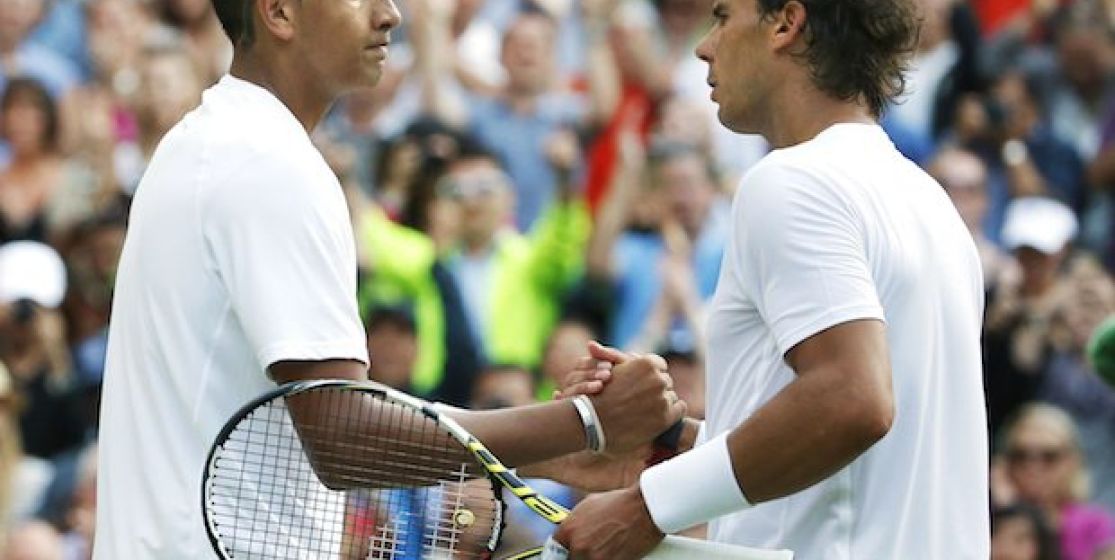Ten years! While the US Open is starting this week, it is interesting to see that it's been ten years since the ATP rankings have been invariably dominated by the same three champions: Federer, Nadal and Djokovic. A historically long hegemony, that a new generation intends to end: the players born in the 90s. Can they make it happen? It's not impossible!
Yes, because this generation isn’t eternal
Rafael Nadal said it himself at the last French Open: "Our generation is walking towards the exit door. We’ve been on top for a while and it makes sense that young players start replacing us. It might not necessarily happen right away, but it will happen eventually." When the Master of clay was asked about the emergence of one of the new kids from the 90s generation that he had defeated, the Austrian Dominic Thiem, only 20 years old and already a regular presence in the major tournaments, he said: "he has a very good service, he’s very powerful on both sides, forehand and backhand. At 17, I didn't have such a good service. My backhand wasn't as powerful as his at the same age." If compliments can be seen as political correctness, the fact remains that Nadal is right: just like him, his two acolytes who monopolized the leadership of the ATP rankings for a decade are not eternal. The Spaniard might only be 28, he started very early and pushed his body so much that he can already start to look at his career in the rear-view mirror. The situation is somewhat similar for Novak Djokovic, 27. As for Federer, if he’s admirably pushing the end of his athletic career, he knows that, at 33, the seasons he has left on the tour are now counted. Only the German Tommy Haas, 36, is beating him in terms of longevity on the tour.
Yes because the middle generation missed out on its chance
"I have long believed that Juan Martin Del Potro would be able to shake up the hierarchy. He seemed so promising when he arrived on the tour, hitting harder than everybody else... I really did believe it." And the French DTN Patrice Hagelauer wasn’t the only one to see the Argentine giant on top, tickling the unmovable Top 3. Alas, despite winning the 2009 US Open while he wasn't even 21 yet, he hasn't (yet) been able to fulfil the hopes placed in him. This is also the great misfortune of many other players from his generation, the one after Nadal, born in 1988. Neither Marin Cilic (1988), Ernests Gulbis (1988) nor Fabio Fognini (1987) seem to be in a position to play anything other than the Stooges, barely able to achieve a few short-lived feats. "Even Andy Murray doesn't have the career that he could have had, says Patrice Hagelauer. He turned the Top 3 into a top 4 for a short while but he's too weak physically to make it last."
Yes, because the new generation is coming in number
Beware: players born in the 1990s are stating to break through on the ATP tour. The three more settled are Milos Raonic (born in 1990) and Grigor Dimitrov (born in 1991) who already entered the world top 10, as well as the talented but still too inconstant Bernard Tomic (born in 1992, a victory in Bogota and a final in Sydney this season). Of the three, it’s "Baby Fed" Dimitrov who amazes the most Patrice Hagelauer "There still a some fitness work to do but the technical level is quite amazing, already among the best." Other newcomers, even younger, have excelled this season: Dominic Thiem, 20, finalist of the Kitzbühel tournament at his home in Austria, the American Jack Sock, 21, winner of the double at Wimbledon with Vasek Pospisil (another kid born in 1990), or the Czech Jiri Vesely, 21, semi-finalist in Düsseldorf. But the two who made the most buzz in 2014 are the German Alexander Zverev, semi-finalist of the Hamburg tournament at just 17, and Nick Kyrgios, the Australian quarterfinalist of the latest Wimbledon at 19. With this performance, the latter is now in the same timing of a certain Novak Djokovic, who also reached his first quarterfinal in a Grand Slam at the age of 19, at the 2006 French Open. At the London tournament, Kyrgios notably eliminated Rafael Nadal and therefore became the first player under 20 to beat a world No. 1 in a Grand Slam since... Rafael Nadal! "He's really a good player, with an overpowering forehand, he's really amazing, says Patrice Hagelauer. In this generation, it's the one I would bet on the most."
Yes, but it might take a little while longer
The French National Technical Delegate is convinced that, "Nadal, Federer and Djokovic are the players of the century. On the ladies tour, Serena Williams is quite lonely, leaving room for other girls to enrich their prize lists. In the ATP, it is unusual to have three 'legends' at the same time, that's why it seems so difficult to dislodge them." When one is injured or not at his best, the other replace him and so on. The youngest are forced to do with the leftovers and it could still take two or three seasons: "Mentally they are machines and physically they manage to remain fit" in the image of a Federer who managed to cleverly lighten his schedule to focus on major events. But we must remember that a decade ago, the Swiss arrived on a tour that had long been dominated by the hegemony of Sampras and Agassi. Inevitably, renewal should happen soon. In the meantime, we must be patient and enjoy these three fantastic.






